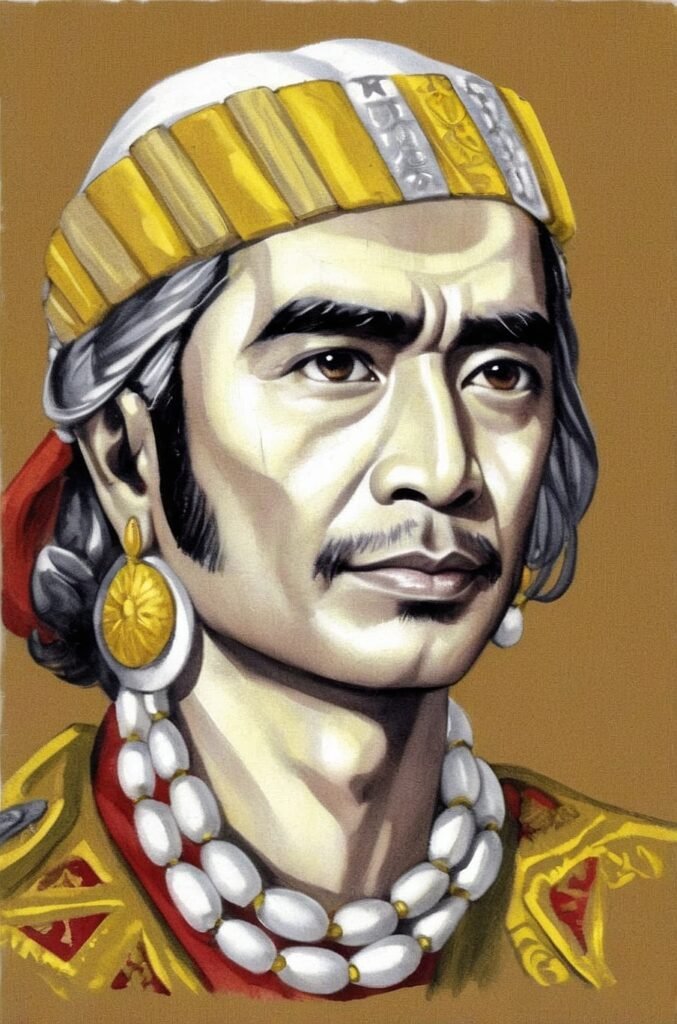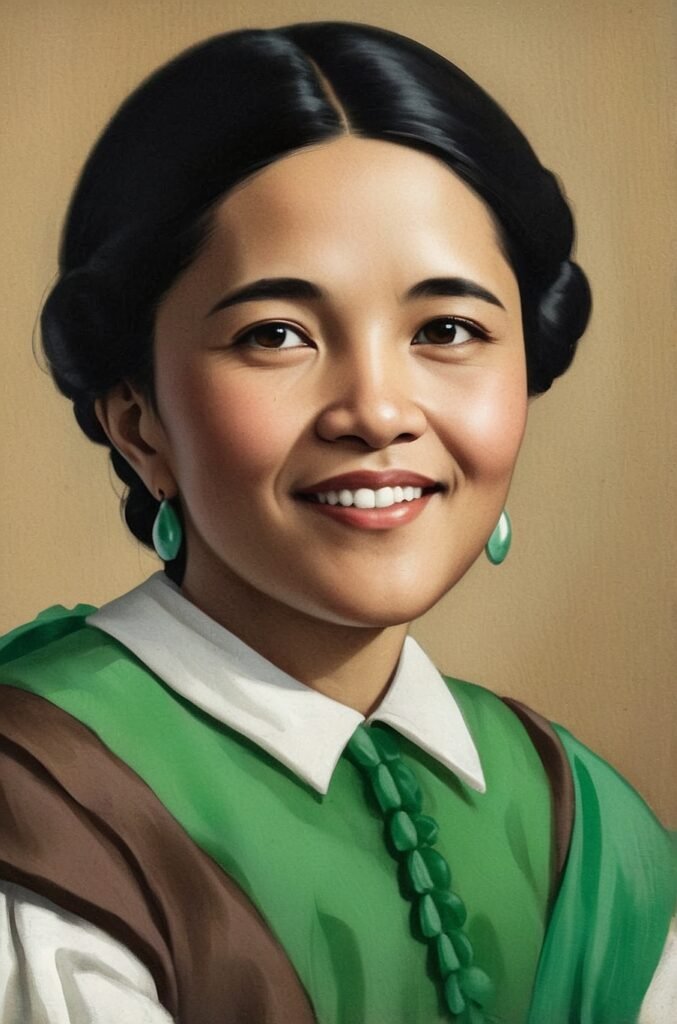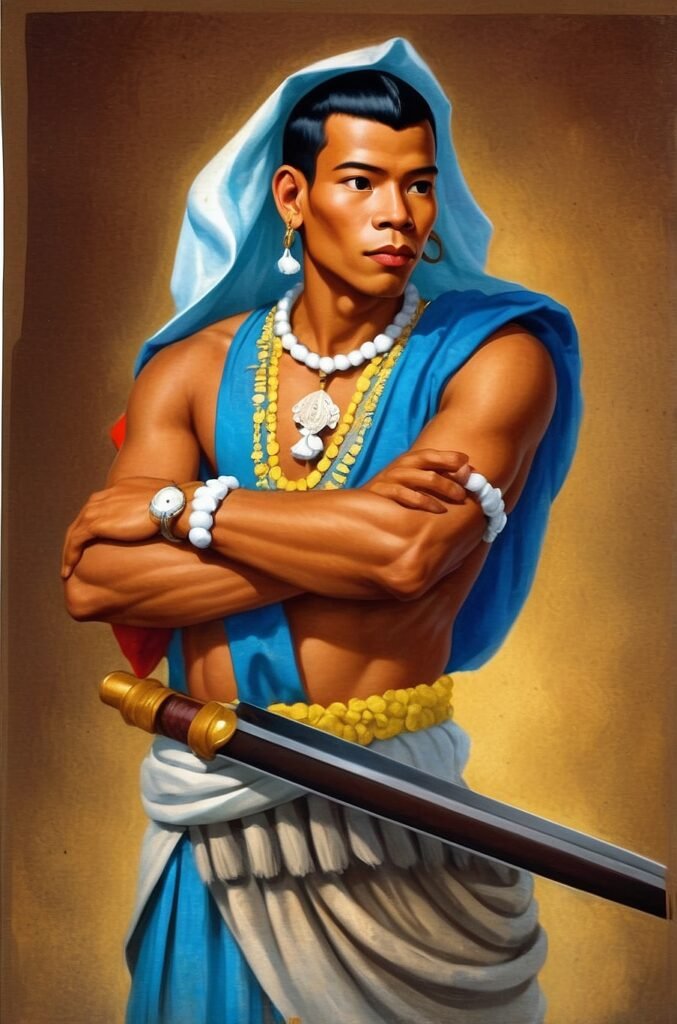Rajah Sulayman, a prominent figure in Philippine history, holds the distinction of being the last native ruler of Manila before the Spanish colonization. His reign marked a significant period in the pre-colonial era of the Philippines, particularly in the region of Luzon. This blog post delves into the life, reign, and legacy of Rajah Sulayman, exploring his role in shaping the history of Manila and his resistance against Spanish colonization. We will examine the political, social, and cultural landscape of pre-colonial Manila under his rule, as well as the events that led to the end of his reign and the subsequent Spanish occupation.
The Rise of Rajah Sulayman
Early Life and Ascension to Power
Rajah Sulayman, also known as Sulayman III or Soliman, was born in the late 15th or early 16th century. He belonged to the Tagalog nobility and was a descendant of the Bolkiah dynasty of Brunei. The exact date of his birth remains uncertain, but historical records suggest that he ascended to power in Manila sometime in the mid-16th century. Sulayman’s rise to power was likely influenced by his noble lineage and the complex political relationships among the various barangays (settlements) in the region.
Political Landscape of Pre-colonial Manila
To understand Rajah Sulayman’s reign, it is crucial to examine the political structure of pre-colonial Manila. The region was divided into several barangays, each led by a datu or rajah. These leaders formed alliances and engaged in trade relationships with neighboring settlements and foreign powers. Manila, situated at the mouth of the Pasig River, was a strategic location for trade and commerce, which contributed to its importance in the region.
| Political Entity | Leader | Location |
|---|---|---|
| Kingdom of Tondo | Rajah Lakandula | Northern bank of Pasig River |
| Kingdom of Maynila | Rajah Sulayman | Southern bank of Pasig River |
| Namayan | Rajah Kalamayin | Upstream of Pasig River |
This table illustrates the major political entities in the Manila area during Rajah Sulayman’s time, highlighting the complex power dynamics of the region.
Rajah Sulayman’s Reign
Governance and Social Structure
During his reign, Rajah Sulayman governed the Kingdom of Maynila, which encompassed the area now known as present-day Manila. His rule was characterized by a hierarchical social structure common to many pre-colonial Philippine societies. At the top of this hierarchy were the maginoo class, which included the datus and rajahs. Below them were the timawa (freemen) and the alipin (dependent class). This social structure played a crucial role in maintaining order and organizing labor within the kingdom.
Economic Prosperity and Trade Relations
Under Rajah Sulayman’s leadership, Manila flourished as a center of trade. The kingdom’s strategic location allowed it to engage in extensive trade networks with China, Japan, and other Southeast Asian kingdoms. Trade goods included gold, beeswax, cotton, and other local products in exchange for porcelain, silk, and other valuable commodities. This economic prosperity contributed to the growth and development of Manila as a significant port city in the region.
Cultural and Religious Practices
The cultural landscape of Manila during Rajah Sulayman’s reign was diverse and dynamic. The predominant religion was a form of animism, with elements of Hinduism and Buddhism introduced through trade contacts. Islam had also begun to influence the region, particularly through interactions with Muslim traders from Brunei and other parts of Southeast Asia. Sulayman himself was believed to have been a Muslim, though the extent of Islamic influence on his governance and the general population remains a subject of historical debate.
Spanish Arrival and Conflict
First Contact with the Spanish
The arrival of Spanish explorers in the Philippines in the mid-16th century marked a turning point in the history of Manila and Rajah Sulayman’s reign. The first significant contact between Sulayman and the Spanish occurred in 1570 when an expedition led by Martin de Goiti arrived in Manila Bay. Initially, the interactions were peaceful, with both parties engaging in trade and diplomatic exchanges.
Escalation of Tensions
Despite the initial peaceful encounters, tensions soon escalated between Rajah Sulayman and the Spanish forces. The primary points of conflict included:
- Religious differences
- Spanish attempts to assert authority
- Control over trade and resources
- Cultural misunderstandings
These tensions culminated in a series of confrontations between Sulayman’s forces and the Spanish expeditionary forces.
The Battle of Manila (1571)
The growing conflict between Rajah Sulayman and the Spanish forces led to the Battle of Manila in 1571. This pivotal event marked the beginning of the end for Sulayman’s reign and the native rule of Manila. The battle unfolded in several stages:
- Spanish Advance: Miguel López de Legazpi led a force of Spanish soldiers and native allies towards Manila.
- Rajah Sulayman’s Defense: Sulayman, along with his allies, including Rajah Lakandula of Tondo, prepared defenses along the Pasig River.
- Naval Engagement: The initial phase of the battle involved naval skirmishes in Manila Bay.
- Land Battle: The conflict moved to land as Spanish forces advanced into the city.
- Defeat and Aftermath: Despite fierce resistance, Sulayman’s forces were overwhelmed by the superior Spanish weaponry and tactics.
The outcome of this battle had far-reaching consequences for Manila and the entire Philippine archipelago.
The Fall of Rajah Sulayman
Aftermath of the Battle
The defeat in the Battle of Manila marked the end of Rajah Sulayman’s effective rule over the kingdom. The Spanish victory led to the establishment of a new colonial order in Manila, with Miguel López de Legazpi founding the city of Manila on June 24, 1571. This event is often considered the beginning of Spanish colonial rule in the Philippines.
Sulayman’s Fate
The exact fate of Rajah Sulayman after the battle remains a subject of historical debate. Some accounts suggest that he continued to resist Spanish rule through guerrilla tactics, while others indicate that he may have been captured or forced into exile. The lack of definitive historical records from this period makes it challenging to ascertain his precise fate with certainty.
Impact on Manila and the Philippines
The fall of Rajah Sulayman and the subsequent Spanish colonization had profound and lasting impacts on Manila and the broader Philippine archipelago:
- Political restructuring
- Introduction of Christianity
- Changes in economic systems
- Cultural transformations
- Linguistic shifts
These changes would shape the course of Philippine history for the next three centuries of Spanish colonial rule.
Legacy of Rajah Sulayman
Historical Significance
Rajah Sulayman’s reign and his resistance against Spanish colonization hold significant historical importance in Philippine history. He is often regarded as a symbol of pre-colonial Philippine sovereignty and resistance against foreign domination. His story serves as a reminder of the complex political and social structures that existed in the Philippines before the arrival of European colonizers.
Cultural Impact
The legacy of Rajah Sulayman continues to influence Philippine culture and national identity. His name and story have been incorporated into various aspects of Filipino culture:
- Literature: Numerous books, poems, and plays have been written about Rajah Sulayman and his era.
- Art: Paintings and sculptures depicting Sulayman can be found in museums and public spaces.
- Education: His story is taught in Philippine history classes, contributing to national historical awareness.
- Place Names: Several locations in Manila bear his name, including the Rajah Sulayman Park in Malate.
Contemporary Relevance
The story of Rajah Sulayman remains relevant in contemporary Philippine society for several reasons:
- National Identity: His reign represents a period of indigenous rule and sovereignty.
- Historical Continuity: Understanding Sulayman’s era provides context for the development of Philippine society.
- Cultural Pride: His resistance against colonization serves as a source of inspiration for cultural preservation efforts.
- Historical Research: Ongoing scholarly interest in pre-colonial Philippine history often focuses on figures like Rajah Sulayman.
Archaeological Evidence and Historical Records
Archaeological Findings
Archaeological excavations in Manila have provided some insights into the pre-colonial period and Rajah Sulayman’s era. These findings include:
- Artifacts: Pottery, jewelry, and trade goods that indicate the economic activities of the period.
- Structural Remains: Evidence of pre-colonial settlements and fortifications.
- Burial Sites: Graves and burial practices that offer insights into social structures and beliefs.
Historical Documents
While pre-colonial Philippine societies did not have a written tradition in the European sense, several historical documents provide information about Rajah Sulayman and his time:
- Spanish Chronicles: Accounts written by Spanish explorers and missionaries.
- Chinese Records: References to trade relations with Luzon in Chinese historical texts.
- Arabic Manuscripts: Documents that mention the spread of Islam in the region.
These sources, while often biased or incomplete, offer valuable perspectives on the period.
Comparative Analysis: Rajah Sulayman and Other Pre-colonial Rulers
To better understand Rajah Sulayman’s place in Philippine history, it’s useful to compare him with other pre-colonial rulers of the archipelago. This comparison highlights the diversity of leadership and governance structures in the pre-colonial Philippines.
| Ruler | Region | Period | Notable Aspects |
|---|---|---|---|
| Rajah Sulayman | Manila | Mid-16th century | Last ruler of Manila before Spanish colonization |
| Lapu-Lapu | Mactan | Early 16th century | Known for defeating Ferdinand Magellan |
| Sultan Kudarat | Mindanao | 17th century | Resisted Spanish colonization for an extended period |
| Rajah Humabon | Cebu | Early 16th century | Initially allied with Magellan, later resisted Spanish rule |
This table illustrates the diverse leadership landscape across the Philippine archipelago during the pre-colonial and early colonial periods.
Myths and Legends Surrounding Rajah Sulayman
Over time, various myths and legends have emerged surrounding Rajah Sulayman, blending historical facts with folkloric elements. These stories often serve to enhance his image as a heroic figure in Philippine history. Some common themes in these legends include:
- Magical Powers: Stories attributing supernatural abilities to Sulayman.
- Prophetic Visions: Tales of Sulayman foreseeing the arrival of the Spanish.
- Hidden Treasures: Legends of buried wealth left behind by Sulayman.
- Continued Resistance: Myths about Sulayman’s ongoing fight against the Spanish after his defeat.
While these legends are not historically accurate, they reflect the cultural significance of Rajah Sulayman in Philippine collective memory.
The Role of Rajah Sulayman in Philippine Historiography
Evolving Perspectives
The portrayal of Rajah Sulayman in Philippine historiography has evolved over time:
- Colonial Period: Often depicted as a “pagan” ruler resisting Christian civilization.
- Nationalist Movement: Reframed as a hero resisting foreign domination.
- Post-Independence: Subject of more nuanced historical analysis.
- Contemporary Scholarship: Focus on understanding the complexities of pre-colonial society.
Challenges in Historical Research
Studying Rajah Sulayman and his era presents several challenges for historians:
- Limited Primary Sources: Lack of written records from pre-colonial Philippine societies.
- Biased Colonial Accounts: Most early written sources come from Spanish perspectives.
- Mythologization: Separating historical facts from later embellishments.
- Cultural Context: Understanding pre-colonial social structures and belief systems.
Despite these challenges, ongoing research continues to provide new insights into this important period of Philippine history.
Conclusion
Rajah Sulayman, the last king of Manila, stands as a significant figure in Philippine history, representing both the complexity of pre-colonial Philippine society and the resistance against Spanish colonization. His reign over the Kingdom of Maynila in the mid-16th century marked a pivotal period in the archipelago’s history, characterized by thriving trade, diverse cultural influences, and a sophisticated political structure.
The arrival of Spanish forces and the subsequent Battle of Manila in 1571 brought an end to Sulayman’s rule, ushering in the era of Spanish colonization that would last for over three centuries. Despite the defeat, Sulayman’s legacy continues to resonate in Philippine culture and national identity. He is remembered not only as the last indigenous ruler of Manila but also as a symbol of pre-colonial sovereignty and resistance against foreign domination.
The story of Rajah Sulayman offers valuable insights into the political, social, and cultural landscape of pre-colonial Philippines. It serves as a reminder of the rich and complex history that existed before European contact and colonization. As historical research progresses, our understanding of Sulayman and his era continues to evolve, contributing to a more nuanced and comprehensive view of Philippine history.
In contemporary Philippines, Rajah Sulayman remains a subject of historical interest, cultural pride, and ongoing scholarly research. His legacy continues to influence discussions about national identity, cultural preservation, and the interpretation of Philippine history. As we look back on this crucial period, the story of Rajah Sulayman invites us to reflect on the complexities of historical change, cultural interaction, and the enduring impact of pre-colonial heritage on modern Philippine society.
Disclaimer: This blog post is based on available historical information and scholarly interpretations as of the date of writing. Historical research is ongoing, and new discoveries may alter our understanding of Rajah Sulayman and his era. Readers are encouraged to consult multiple sources and recent academic publications for the most up-to-date information. If you notice any inaccuracies or have additional verified information, please contact us so we can update the content promptly.




